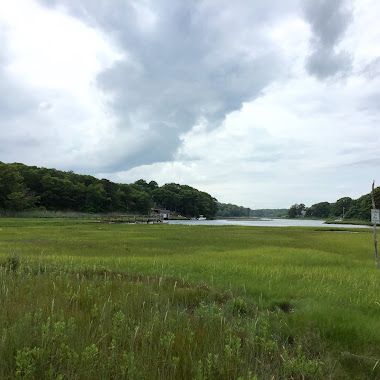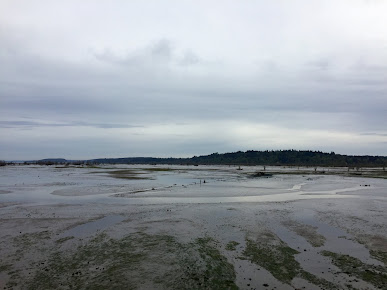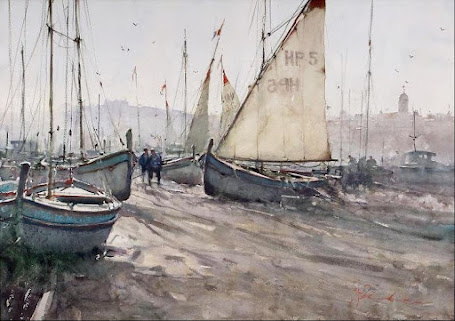For many realist watercolor painters the primary job is to discover how to simplify the scene or image they want to paint. The real world doesn't always resolve into a neat sequence of layers that can be laid simply on top of one another. In the photo below, for example, a scattering of very light blades of grass sits among an array of darker ones.
To paint this subject accurately it seems that one would have to paint around the light grasses to avoid making them appear farther away than the middle value and dark strokes. This is a good example of the branch of watercolor painting known as "No Fun". Surely there's a way to suggest the mixture of values without resorting completely to negative painting. Fortunately, we are not obliged to be accurate in our interpretation of the subject. Maybe just a few of the separate light grass blades would be enough.
OK? Refining the image down to the smallest number of essential units sounds good. It still remains for you to discover how you would apply the paint to read as grass? Do you have answers to the following questions?
(1) Is there a way to paint the grass with an overall wash that can underlie everything that will come later?
(2) Is there anything that should be reserved?
(3) Is there anything that should be done while the shape is still wet?
If so, carry on. If not, get out a piece of practice paper! You could try scraping out a few pieces of grass, just a few. Or maybe you could lift a couple of lights. You could also try masking fluid, once the paper is dry. And there's always opaque paint. Finally, you can usually make it easier by redesigning the look of the image. For example, what if you make all the grass you invent darker than the previous layer. True, it would look different, but it might look good.
For homework, experiment with these techniques. Try combining them. Try making an all soft edged version. Maybe all hard edged. Use one of the wetland scenes, and remember, err on the side of too little information.














